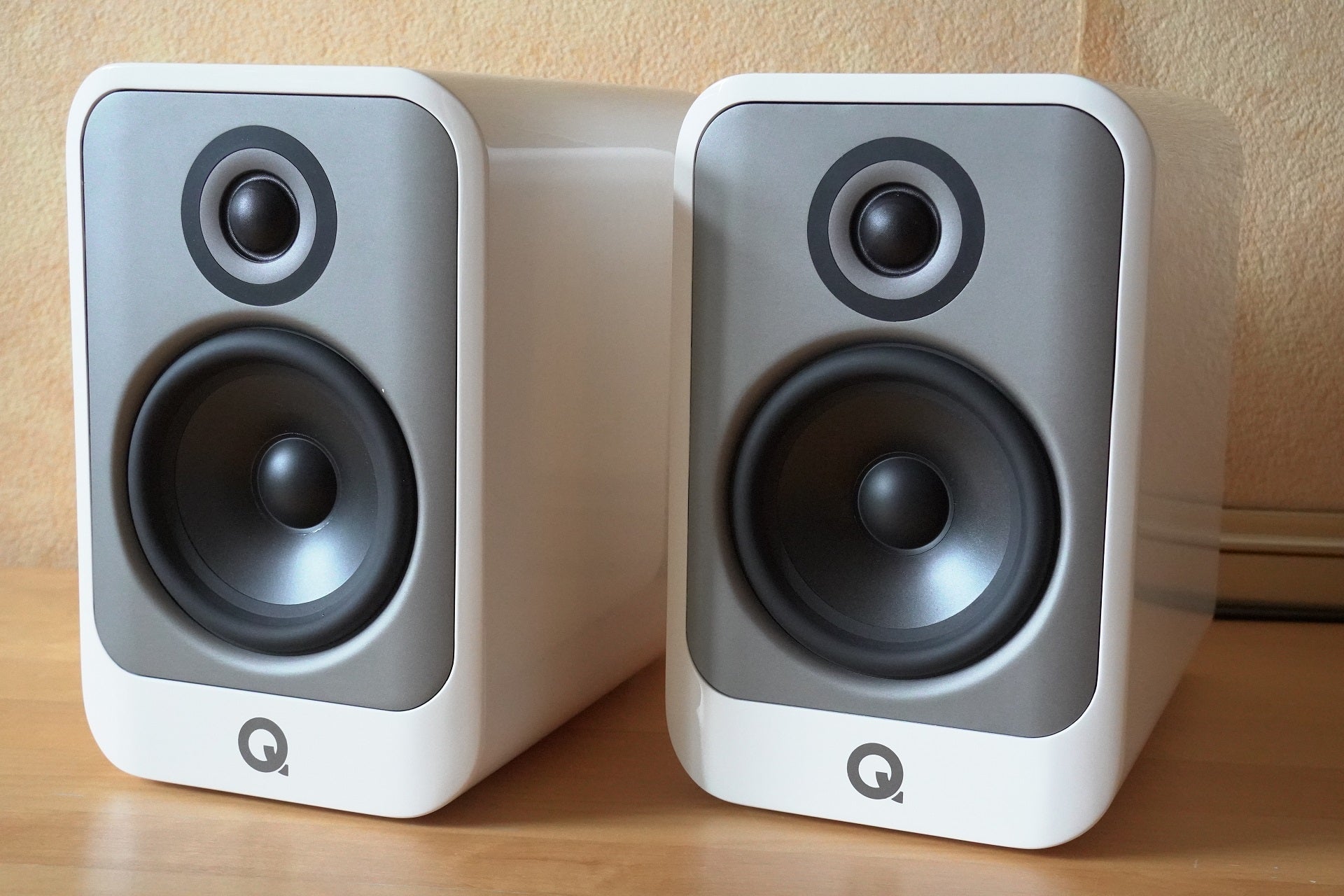Verdict
Another excellent stereo speaker from Q Acoustics, the Concept 30 deliver a terrifically fun and entertaining listen. Some may find the expense a little too high and setting up the FS75 stands is a bit of a pain.
Pros
- Flowing, energetic sound
- Great minimalist looks
Cons
- Speaker and FS75 stand are an expensive combo
- Assembling the stand can be a pain
Availability
- UKRRP: £899
- USARRP: $1299
- EuropeRRP: €1199
- CanadaTBC
- AustraliaTBC
-
Gelcore cabinetHelps to minimise high-frequency noise -
Bi-wireSingle and bi-wired terminal options
Introduction
For a product that’s referred to as ‘loudspeaker’, hi-fi brands are obsessed with being as quiet as possible.
That’s not in the volume sense of course but in terms of the cabinet, and it’s a trend that Q Acoustics has emphasised with the Concept 30.
The Concept series has focused on presenting audio with a neutrality that lays bare a recording without artificially colouring the sound. It also speaks to a manufacturer pitching itself to a more upmarket customer, the kind Bowers & Wilkins has been pursuing.
A truly high-end home audio performance is what Q Acoustics is calling the Concept 30. Does it live up to the billing?
Design
- High gloss, premium looks
- F S75 stands are optional
- Single or bi-wired terminals available
Bowers & Wilkins has its tweeter-on-top design, KEF its Uni-Q drivers, and Klipsch its horn-loaded tweeters. Some of the most popular speaker brands have eye-catching designs, but Q Acoustics has kept it low key with its offering – although you’d still be able to pick its speakers out of a line-up.
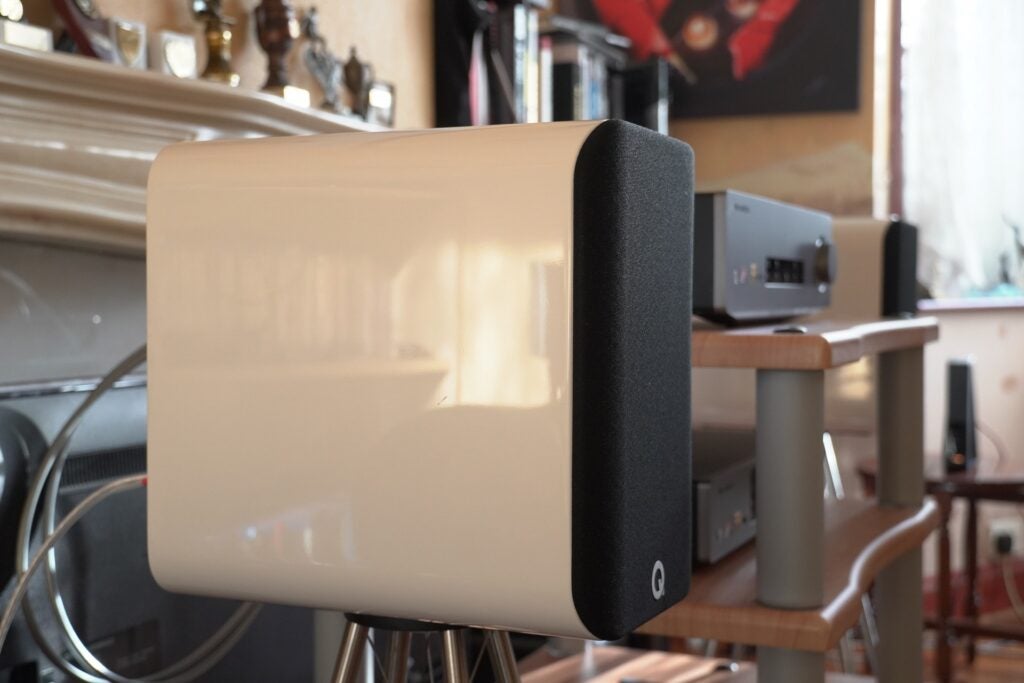
From the Concept 30’s deep cabinet – 319mm is 10mm less than the 3030i model from a few years back – to its rounded curves and baffle design, the Concept 30 is a speaker with sleek and elegant lines. The appearance is topped off by the choice of three high gloss and reflective finishes: black, silver and white.
At 7.9kg they feel substantial, the baffle is magnetically attached and easy to peel off to reveal the drivers beneath. Around the back is a bass reflex port that manages the speaker’s bass output and below are the binding terminals for connecting speaker cables.
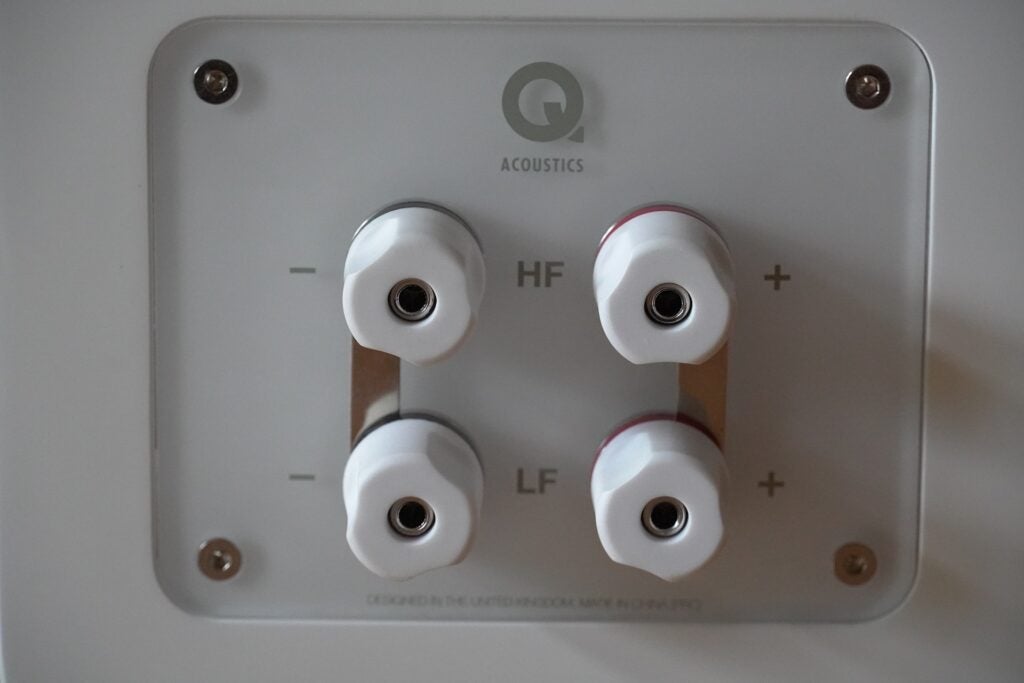
The Concept 30 offers bi-wired or single wired configurations. For the purposes of this review, a single wire configuration was used connected to a Cambridge Audio CXA81 amplifier with QED Reference XT25 speaker cables.
In terms of stands the Concept 30 could be paired with any, but for optimal performance Q Acoustics suggests pairing with their FS75 stands. Similar to the Tensegrity stand introduced with the Concept 300, the FS75 uses four legs instead of three. The stand has an actual purpose beyond looking cool, minimising reflections and reducing resonance that could affect and colour the speaker’s sound.
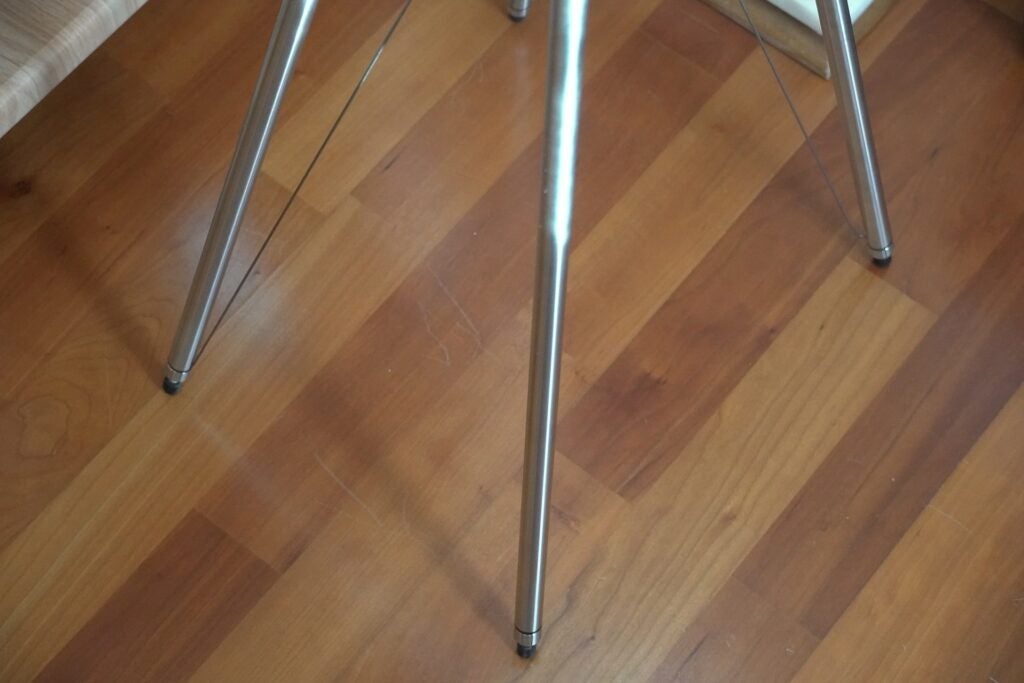
The process of assembling them is a laborious one, despite being simpler to attach than on the Q Active 200 speakers (you don’t have to affix the central plate to the speaker’s underside). The act of tightening the screws seems to goad you, I was never too sure where they were too tight or tight enough. It took me 40+ minutes to assemble, after which I really did need a break.
The stands come with clips for fastening cables to the legs, as well as the choice of spikes or rubber feet for whatever floor the speakers are standing on. This did present a fly in the ointment as the spikes couldn’t attach to one leg in particular – a closer look revealed some rubber was still attached that meant the screw couldn’t go fully in.
It didn’t appear to have a degrading effect on the speaker’s performance but given they fetch £349 a pair, I’d have expected better quality control. Foam bungs are also provided to slot into the rear ports and manage the bass performance.
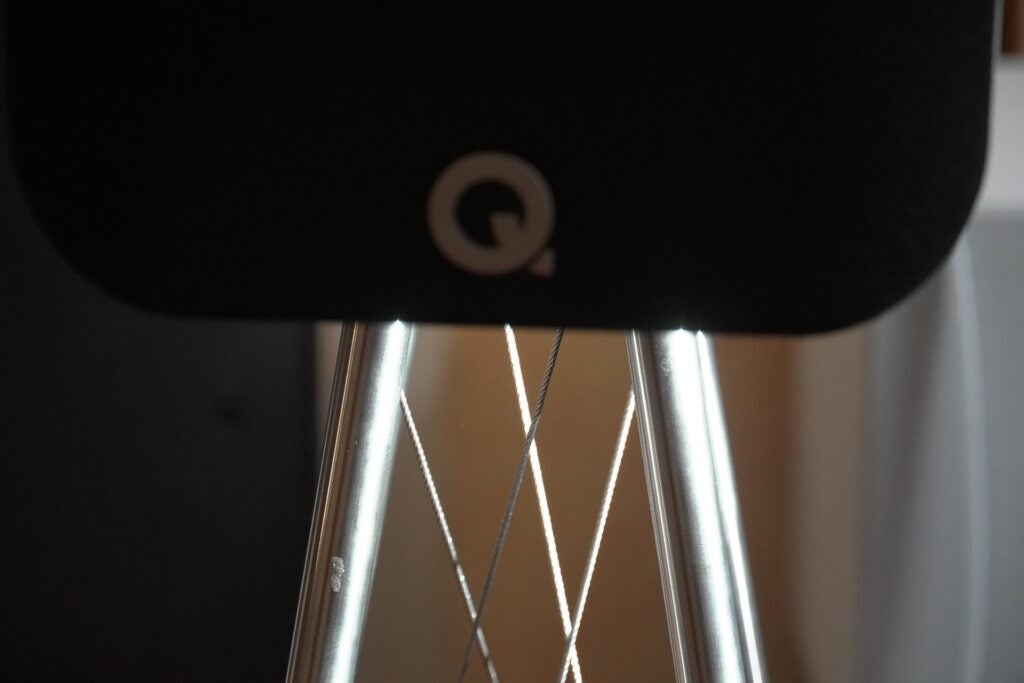
Features
- Gelcore damped cabinet
- P2P bracing to reduce vibrations
- 5-inch mid/bass, 1-inch tweeter
The Concept 30 are descendants from the Concept 300 with some of the technology that featured in that speaker flowing down to this more affordable effort.
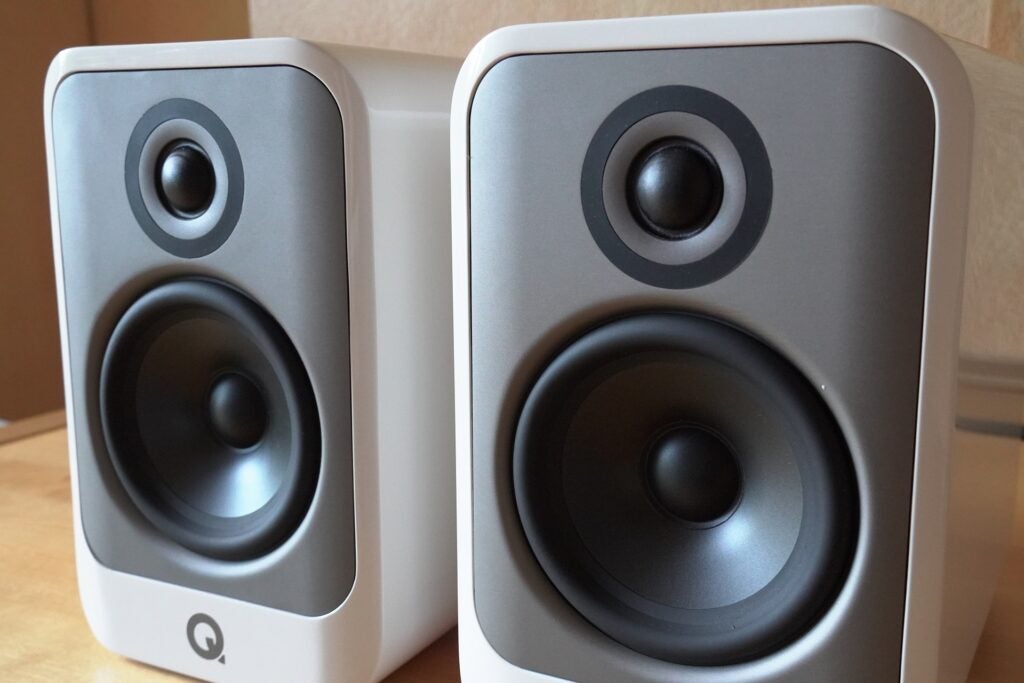
One is the Gelcore cabinet construction, designed to minimise high-frequency noise with a non-setting gel adhesive sandwiched between two individual layers that dissipates high-frequency vibrations generated by the drivers into heat. The P2P (Point to Point) internal bracing aids the rigidity of the cabinet, applied to “precise” points of the cabinet to dissipate unwanted energy throughout the cabinet.
This trifecta of systems to minimise vibrations is further enhanced by the isolation base. This is made from two plates separated by suspension ‘spheres’ that isolate the cabinet from external vibrations. Q Acoustics claims this helps provide tighter stereo imaging and greater depth to the soundstage.
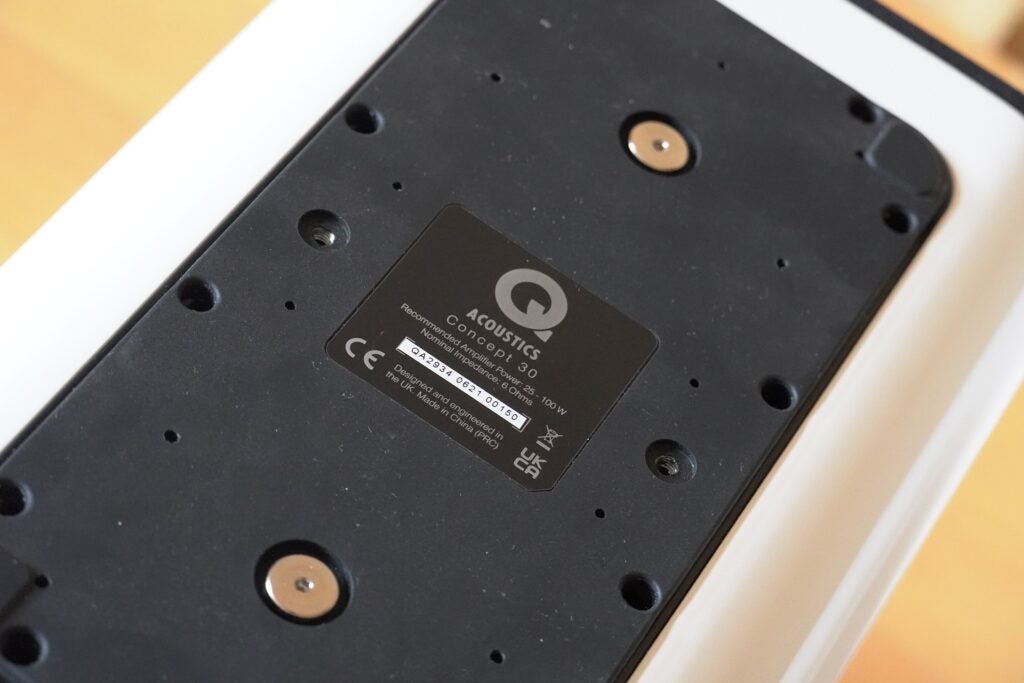
The drivers have been designed as an integral part of the cabinet’s mechanical structure; the drive units are fixed to a stiff 3mm aluminium baffle. Again here, part of the reason behind this is to dampen vibrations (as well as minimise structural coupling and present the correct acoustic seal).
The Concept 30, 50 and 90 speakers feature new designs for the mid/bass and tweeter drives. The mid/bass is 5-inch effort, the 1-inch tweeter has been hermetically sealed and mechanically isolated from the baffle for lower distortion and lower crossover point. The crossover is mounted to the isolation base I mentioned earlier, and that’s intended to keep it free from the sound-affecting vibrations and the electro-magnetic impact of the drivers.
Sound Quality
- Fun, flowing sound
- Punchy but measured bass performance
- Excellent tonal balance
The Q Acoustics’ sound has the quality of just ‘one more song’. Listening to them in the background, I eventually had to turn the volume up. A 30-minute session spilled over into a 90-minute long one, the speakers left me keen to hear how well they translated songs from my library.
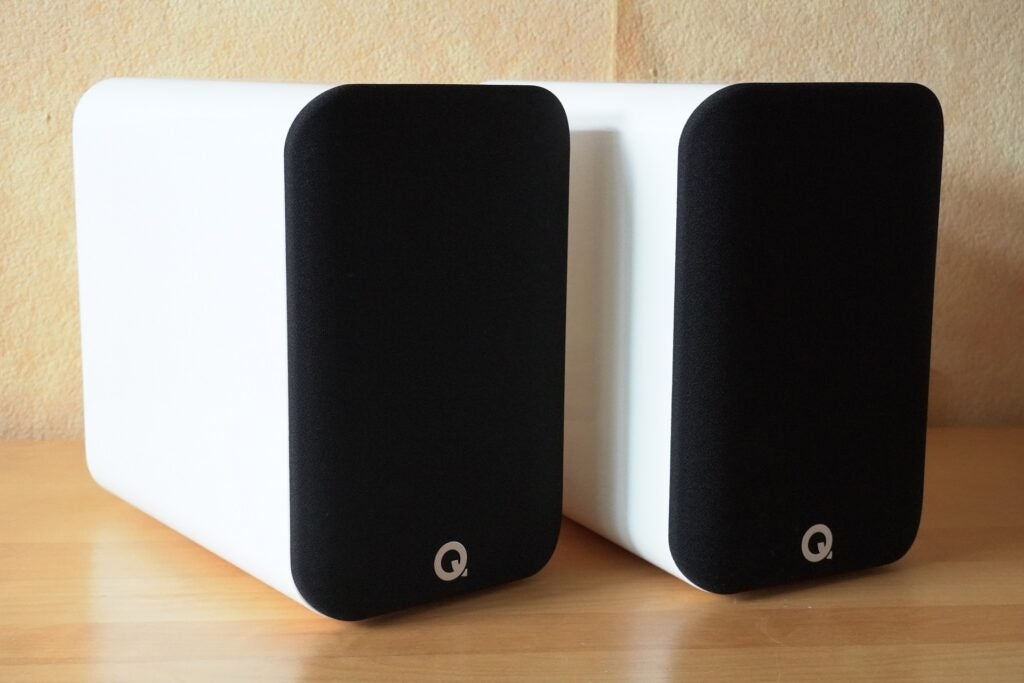
Toed in a little towards the listening position and pulled away from the walls the Concept 30 are simply a fun, engaging and energetic listen. A live recording of Black Hole Sun by Chris Cornell (Tidal) and the speakers come across as very revealing, not just of the clarity Cornell’s distinctive voice is presented in but the setting it’s taking place in.
I’d have guessed it was a small, intimate setting with the crowd around and looking at the album cover it turned out to be a good guess. The character of the venue, the echoes and slight reverberation of his voice on the walls indicates the transparent quality of the speaker’s performance.
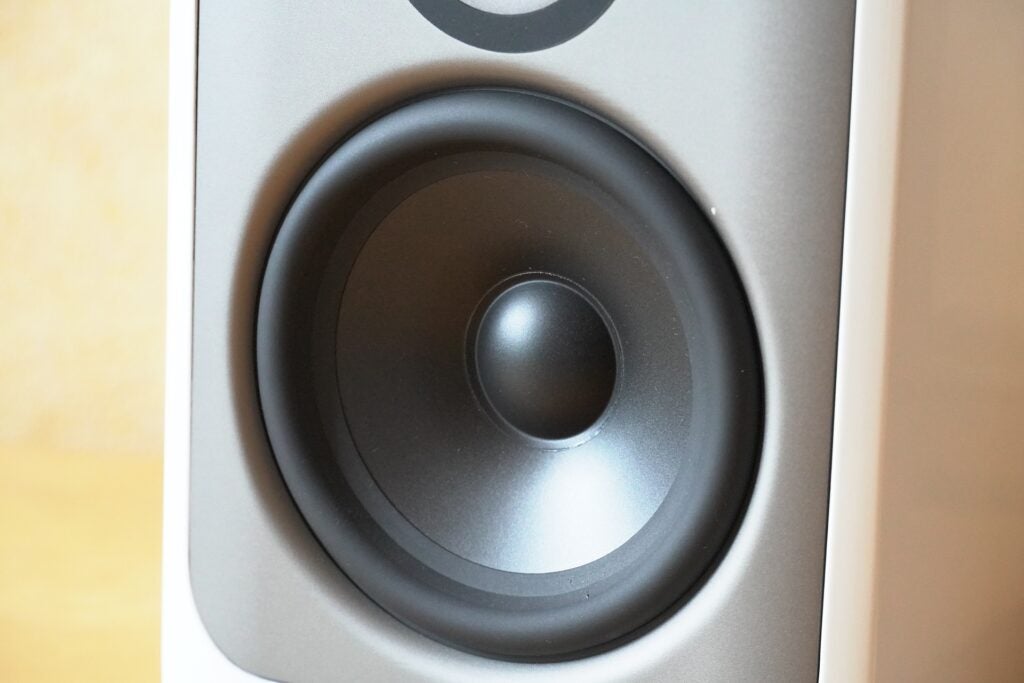
With Whiplash from the Whiplash soundtrack, the Concept 30 snaps into the song with relish. Tonally they’re a natural and convincing listen; the timbre of the instruments, from the more percussive elements to the sound of the horn section, sounds spot on. This is allied with effective separation between them so they can be heard within their own space and not encroaching on others. It’s a flowing, energetic piece the Q Acoustics matches with its sense of energy and pace.
A move to Caravan from the same soundtrack and the stops and starts are precisely conveyed, the sound clean and clear with seemingly no noise other than that of the instruments playing noted. The speakers are certainly not dragging or rushing with that track.
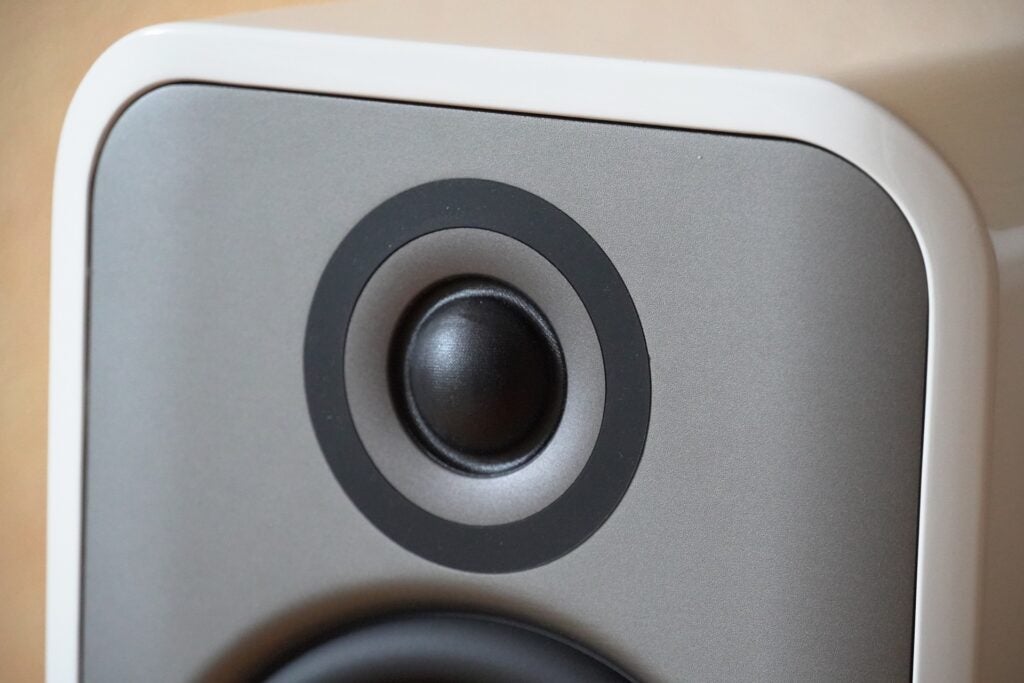
Stereo imaging and depth impress, I can sense the depth of the soundstage from my listening position (about two metres or so) as instruments are placed in front and slightly behind to give a realistic impression of the orchestra. It sounds so true and natural I can almost hear every beat and its place within the soundstage. The Concept 30’s performance is composed and controlled at all times.
Resolution and detail levels are high, but the speakers won’t necessarily dress up a track to make it sound better, content to present as presumably intended. Stevie Wonder’s voice in Jesus Children of America from his Innervisions album (Qobuz) had a slightly more echoey reverb that’s more pronounced than I remember hearing through a pair of headphones.
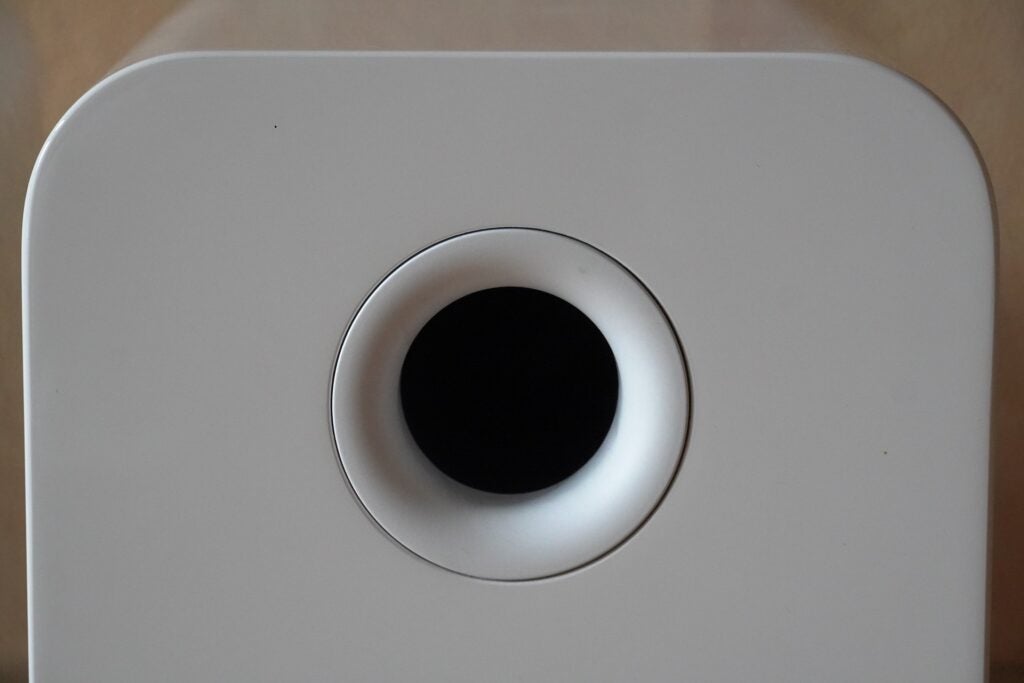
The high frequencies can (depending on the track and source) be sharp as a whistle but there’s also weight and heft to the lower frequencies that makes for a punchy and never overzealous application of bass.
Paul’s Dream from the Dune soundtrack (Qobuz) is vividly realized through these speakers, the power behind the bass makes for a strong foundation, the resolution and detail it uncovers is excellent – the sound of the grains of sand are delivered with great fidelity – and there’s good depth to the stereo image with the overlapping whispers as they flutter across the soundstage. The Concept 30 presents the track as a harmonious whole, clear and sharp with excellent tonal balance and no distortion of vibration.
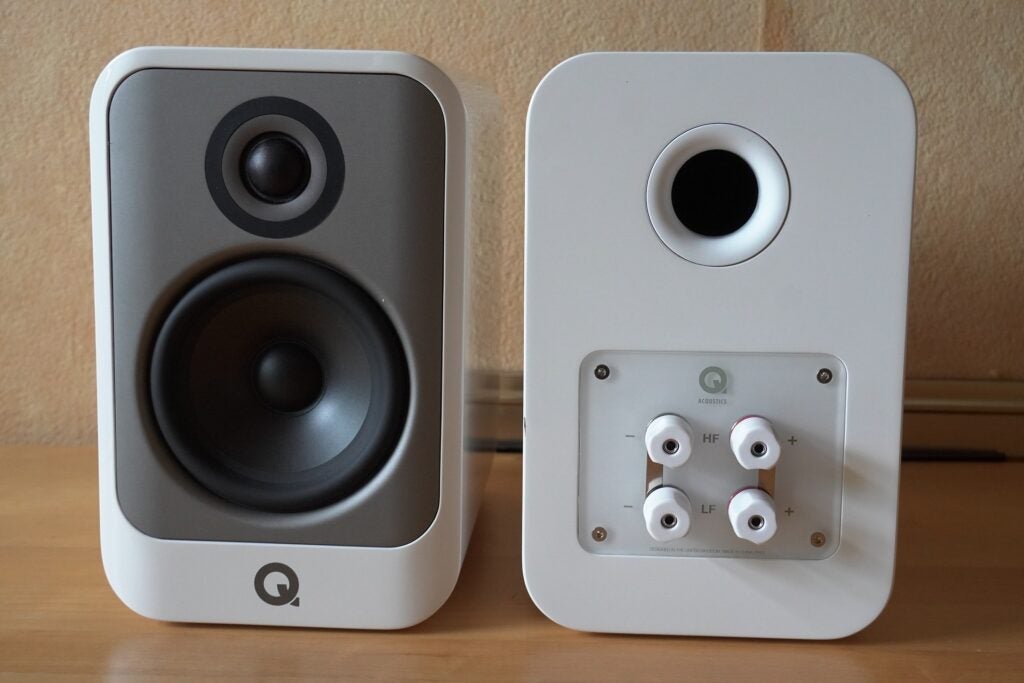
Vocals have plenty of character, whether it’s Mitski’s Stay Soft, Janelle Monae’s Can’t Live Without Your Love or Chris Cornell from the studio version of Black Hole Sun, the vocals are full of emotion that kept me listening throughout.
They’re a dynamic-sounding pair of standmounts, from more minute ebbs and flows to broader shifts between quiet and loud. The Concept 30 are a frequently lively (but again not overzealous) and revealing pair of hi-fi speakers. They consistently held my attention, the type of speakers I wanted to keep on listening to hear how they dealt with my favourite tracks. They are a fun listen. Q Acoustics’ winning streak keeps going with the Concept 30.
Latest deals
Should you buy it?
To hear your music in great quality Partnered with a capable source, the Concept 30 deliver a precise, natural and engaging sound that will have you listening for hours on end.
If you prefer a simple setup You don’t have to purchase the F S75 stands, but Q Acoustics recommends them for the stability they present. The process of setting them up can be inconveniencing and arduous at times.
Final Thoughts
When listening to the Concept 30, it was always a case of just listening to one more song. There’s a more-ish sensibility to the sound that draws you in and doesn’t let go. They are a superbly communicative pair of hi-fi speakers.
They are also an expensive pair at £899, much more expensive than the affordable 3000i range, and the FS75 stands (if you choose to go for them) add £349 on top, which is a significant outlay. And the stand is not the easiest to assemble, sapping some of the excitement in setting up these speakers.
The Concept 30s are, nevertheless, a terrifically fun and precise listen, and worth the setup struggles to get to its sound.
How we test
We test every hi-fi speaker we review thoroughly over an extended period of time. We use industry-standard tests to compare features properly. We’ll always tell you what we find. We never, ever, accept money to review a product.
Find out more about how we test in our ethics policy.
Tested with Tidal and Qobuz streaming services
FAQs
Q Acoustics recommends you partner the Concept 30 with an amplifier capable of 25 – 100W
Jargon buster
Bi-wire
Bi-wiring a speaker means using two cables to connect to a speaker to an amplifier instead of one.
Midrange
Midrange refers to the part of the frequency range that sits between the bass and treble. The midrange is the area that handles vocals and most of the instruments heard in a track. It can also be in reference to midrange loudspeaker drivers that replicate this area of the frequency range.
Hi-Res Audio
Hi-Res audio is referred to as a standard as well as a marketing term that describes digital audio files of better-than-CD quality (16-bit/44.1kHz).
Verdict
Another excellent stereo speaker from Q Acoustics, the Concept 30 deliver a terrifically fun and entertaining listen. Some may find the expense a little too high and setting up the FS75 stands is a bit of a pain.
Pros
- Flowing, energetic sound
- Great minimalist looks
Cons
- Speaker and FS75 stand are an expensive combo
- Assembling the stand can be a pain
Availability
- UKRRP: £899
- USARRP: $1299
- EuropeRRP: €1199
- CanadaTBC
- AustraliaTBC
-
Gelcore cabinetHelps to minimise high-frequency noise -
Bi-wireSingle and bi-wired terminal options
Introduction
For a product that’s referred to as ‘loudspeaker’, hi-fi brands are obsessed with being as quiet as possible.
That’s not in the volume sense of course but in terms of the cabinet, and it’s a trend that Q Acoustics has emphasised with the Concept 30.
The Concept series has focused on presenting audio with a neutrality that lays bare a recording without artificially colouring the sound. It also speaks to a manufacturer pitching itself to a more upmarket customer, the kind Bowers & Wilkins has been pursuing.
A truly high-end home audio performance is what Q Acoustics is calling the Concept 30. Does it live up to the billing?
Design
- High gloss, premium looks
- F S75 stands are optional
- Single or bi-wired terminals available
Bowers & Wilkins has its tweeter-on-top design, KEF its Uni-Q drivers, and Klipsch its horn-loaded tweeters. Some of the most popular speaker brands have eye-catching designs, but Q Acoustics has kept it low key with its offering – although you’d still be able to pick its speakers out of a line-up.

From the Concept 30’s deep cabinet – 319mm is 10mm less than the 3030i model from a few years back – to its rounded curves and baffle design, the Concept 30 is a speaker with sleek and elegant lines. The appearance is topped off by the choice of three high gloss and reflective finishes: black, silver and white.
At 7.9kg they feel substantial, the baffle is magnetically attached and easy to peel off to reveal the drivers beneath. Around the back is a bass reflex port that manages the speaker’s bass output and below are the binding terminals for connecting speaker cables.

The Concept 30 offers bi-wired or single wired configurations. For the purposes of this review, a single wire configuration was used connected to a Cambridge Audio CXA81 amplifier with QED Reference XT25 speaker cables.
In terms of stands the Concept 30 could be paired with any, but for optimal performance Q Acoustics suggests pairing with their FS75 stands. Similar to the Tensegrity stand introduced with the Concept 300, the FS75 uses four legs instead of three. The stand has an actual purpose beyond looking cool, minimising reflections and reducing resonance that could affect and colour the speaker’s sound.

The process of assembling them is a laborious one, despite being simpler to attach than on the Q Active 200 speakers (you don’t have to affix the central plate to the speaker’s underside). The act of tightening the screws seems to goad you, I was never too sure where they were too tight or tight enough. It took me 40+ minutes to assemble, after which I really did need a break.
The stands come with clips for fastening cables to the legs, as well as the choice of spikes or rubber feet for whatever floor the speakers are standing on. This did present a fly in the ointment as the spikes couldn’t attach to one leg in particular – a closer look revealed some rubber was still attached that meant the screw couldn’t go fully in.
It didn’t appear to have a degrading effect on the speaker’s performance but given they fetch £349 a pair, I’d have expected better quality control. Foam bungs are also provided to slot into the rear ports and manage the bass performance.

Features
- Gelcore damped cabinet
- P2P bracing to reduce vibrations
- 5-inch mid/bass, 1-inch tweeter
The Concept 30 are descendants from the Concept 300 with some of the technology that featured in that speaker flowing down to this more affordable effort.

One is the Gelcore cabinet construction, designed to minimise high-frequency noise with a non-setting gel adhesive sandwiched between two individual layers that dissipates high-frequency vibrations generated by the drivers into heat. The P2P (Point to Point) internal bracing aids the rigidity of the cabinet, applied to “precise” points of the cabinet to dissipate unwanted energy throughout the cabinet.
This trifecta of systems to minimise vibrations is further enhanced by the isolation base. This is made from two plates separated by suspension ‘spheres’ that isolate the cabinet from external vibrations. Q Acoustics claims this helps provide tighter stereo imaging and greater depth to the soundstage.

The drivers have been designed as an integral part of the cabinet’s mechanical structure; the drive units are fixed to a stiff 3mm aluminium baffle. Again here, part of the reason behind this is to dampen vibrations (as well as minimise structural coupling and present the correct acoustic seal).
The Concept 30, 50 and 90 speakers feature new designs for the mid/bass and tweeter drives. The mid/bass is 5-inch effort, the 1-inch tweeter has been hermetically sealed and mechanically isolated from the baffle for lower distortion and lower crossover point. The crossover is mounted to the isolation base I mentioned earlier, and that’s intended to keep it free from the sound-affecting vibrations and the electro-magnetic impact of the drivers.
Sound Quality
- Fun, flowing sound
- Punchy but measured bass performance
- Excellent tonal balance
The Q Acoustics’ sound has the quality of just ‘one more song’. Listening to them in the background, I eventually had to turn the volume up. A 30-minute session spilled over into a 90-minute long one, the speakers left me keen to hear how well they translated songs from my library.

Toed in a little towards the listening position and pulled away from the walls the Concept 30 are simply a fun, engaging and energetic listen. A live recording of Black Hole Sun by Chris Cornell (Tidal) and the speakers come across as very revealing, not just of the clarity Cornell’s distinctive voice is presented in but the setting it’s taking place in.
I’d have guessed it was a small, intimate setting with the crowd around and looking at the album cover it turned out to be a good guess. The character of the venue, the echoes and slight reverberation of his voice on the walls indicates the transparent quality of the speaker’s performance.

With Whiplash from the Whiplash soundtrack, the Concept 30 snaps into the song with relish. Tonally they’re a natural and convincing listen; the timbre of the instruments, from the more percussive elements to the sound of the horn section, sounds spot on. This is allied with effective separation between them so they can be heard within their own space and not encroaching on others. It’s a flowing, energetic piece the Q Acoustics matches with its sense of energy and pace.
A move to Caravan from the same soundtrack and the stops and starts are precisely conveyed, the sound clean and clear with seemingly no noise other than that of the instruments playing noted. The speakers are certainly not dragging or rushing with that track.

Stereo imaging and depth impress, I can sense the depth of the soundstage from my listening position (about two metres or so) as instruments are placed in front and slightly behind to give a realistic impression of the orchestra. It sounds so true and natural I can almost hear every beat and its place within the soundstage. The Concept 30’s performance is composed and controlled at all times.
Resolution and detail levels are high, but the speakers won’t necessarily dress up a track to make it sound better, content to present as presumably intended. Stevie Wonder’s voice in Jesus Children of America from his Innervisions album (Qobuz) had a slightly more echoey reverb that’s more pronounced than I remember hearing through a pair of headphones.

The high frequencies can (depending on the track and source) be sharp as a whistle but there’s also weight and heft to the lower frequencies that makes for a punchy and never overzealous application of bass.
Paul’s Dream from the Dune soundtrack (Qobuz) is vividly realized through these speakers, the power behind the bass makes for a strong foundation, the resolution and detail it uncovers is excellent – the sound of the grains of sand are delivered with great fidelity – and there’s good depth to the stereo image with the overlapping whispers as they flutter across the soundstage. The Concept 30 presents the track as a harmonious whole, clear and sharp with excellent tonal balance and no distortion of vibration.

Vocals have plenty of character, whether it’s Mitski’s Stay Soft, Janelle Monae’s Can’t Live Without Your Love or Chris Cornell from the studio version of Black Hole Sun, the vocals are full of emotion that kept me listening throughout.
They’re a dynamic-sounding pair of standmounts, from more minute ebbs and flows to broader shifts between quiet and loud. The Concept 30 are a frequently lively (but again not overzealous) and revealing pair of hi-fi speakers. They consistently held my attention, the type of speakers I wanted to keep on listening to hear how they dealt with my favourite tracks. They are a fun listen. Q Acoustics’ winning streak keeps going with the Concept 30.
Latest deals
Should you buy it?
To hear your music in great quality Partnered with a capable source, the Concept 30 deliver a precise, natural and engaging sound that will have you listening for hours on end.
If you prefer a simple setup You don’t have to purchase the F S75 stands, but Q Acoustics recommends them for the stability they present. The process of setting them up can be inconveniencing and arduous at times.
Final Thoughts
When listening to the Concept 30, it was always a case of just listening to one more song. There’s a more-ish sensibility to the sound that draws you in and doesn’t let go. They are a superbly communicative pair of hi-fi speakers.
They are also an expensive pair at £899, much more expensive than the affordable 3000i range, and the FS75 stands (if you choose to go for them) add £349 on top, which is a significant outlay. And the stand is not the easiest to assemble, sapping some of the excitement in setting up these speakers.
The Concept 30s are, nevertheless, a terrifically fun and precise listen, and worth the setup struggles to get to its sound.
How we test
We test every hi-fi speaker we review thoroughly over an extended period of time. We use industry-standard tests to compare features properly. We’ll always tell you what we find. We never, ever, accept money to review a product.
Find out more about how we test in our ethics policy.
Tested with Tidal and Qobuz streaming services
FAQs
Q Acoustics recommends you partner the Concept 30 with an amplifier capable of 25 – 100W
Jargon buster
Bi-wire
Bi-wiring a speaker means using two cables to connect to a speaker to an amplifier instead of one.
Midrange
Midrange refers to the part of the frequency range that sits between the bass and treble. The midrange is the area that handles vocals and most of the instruments heard in a track. It can also be in reference to midrange loudspeaker drivers that replicate this area of the frequency range.
Hi-Res Audio
Hi-Res audio is referred to as a standard as well as a marketing term that describes digital audio files of better-than-CD quality (16-bit/44.1kHz).


















